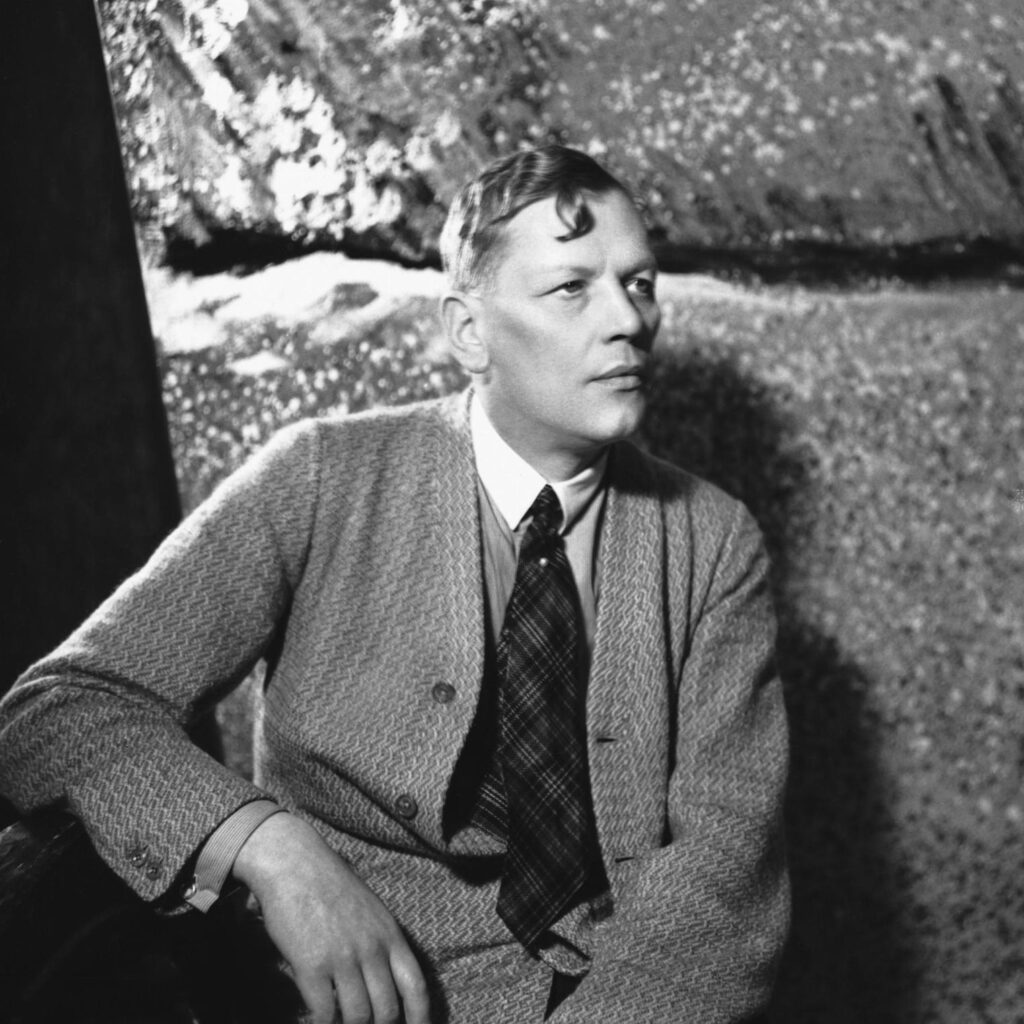
Hans Knappertsbusch, credit Wikipedia
Endnotes, January 2024
In this edition: music from Iceland; vintage Bruckner from the Berlin Philharmonic, reviewed by Stuart Millson
Orchestral music for the stage is the theme of a recent disc from Chandos, except that the composers concerned are ~ until now ~ almost completely unknown to British audiences. Iceland’s Jon Leifs is known to audiences here at home (a dramatic piece of his was performed at the Proms some ten years ago) but his fellow countryman, Pall Isolfsson (1893-1974), and countrywoman, Jorunn Vidar (1918-2017) are surely making their debut.
Vidar’s ballet score, Eldur ~ or Fire (a work from 1950) starts the programme, occupying just under ten minutes of the disc. Written for the, then, new National Theatre in Reykjavik, Vidar’s piece brings the element of fire from Iceland’s rocky landscape into the concert hall. The performers here, the Iceland Symphony Orchestra, field a very fine woodwind section, whose clarinet player particularly stands out; the instrumental sound captured as if in a chamber hall. But the orchestral combustion spreads and the listener will enjoy (as in Wagner), a motif, representing flames; then a waltz-like touch to the writing; and a growing sense of overpowering forces, via brass ~ the horn section, in particular., but it seems that this Icelandic composer has a near-unique style of her own: not quite romanticism, and certainly not atonality, but a simplicity, a directness, no doubt sculpted by her island-nation’s remoteness, darkness and elemental forces. One listens in vain here for echoes of Nielsen and Sibelius
However, for Vidar’s second ballet on the CD, Olafur Liljuros (1952), a more nostalgic, old-world, storybook-style emerges ~ perhaps reminiscent, in part, of Grieg’s setting of antique, baroque tunes in his Holberg Suite (or even similar folk-like pieces by our own Warlock and E.J. Moeran). And the eight-part ballet sequence presented here works like a suite, rather than a work for dance, charting the adventures of one Olafur ~ a figure from the old Norse ballads of Iceland ~ whose life is in peril after chancing upon a group of elf-maidens. Beware of appearances is the moral of the story. Yet despite its simple, fairy tale quality, there is ~ once again ~ some beautiful writing here: ravishing violin playing by the Icelanders, which achieves a rare quartet-like intimacy; and crystal-clear brass, with a trombone tone that ‘hangs’ in the air. Curiously, this Super-Audio CD creates an all-enveloping acoustic, as if you are sitting in the very heart of the orchestra pit in the Reykjavik Theatre.
Finally, Isolfsson’s incidental music to Ibsen’s The Feast at Solhaug adds a true flourish to the disc, not least through a four-minute maestoso Overture, and gentle andante, entitled, The Mountain Dweller. Anyone seeking national flavour in music, or an enthusiast for lesser-known Nordic composers will derive endless pleasure from this well-recorded disc. Conductor Rumon Gamba leads his forces with total conviction: a triumph for this orchestra at ‘the edge of the world’.
Our last recommendation for the New Year edition is in the category of ‘historic performance’: a gripping reading by the Berlin Philharmonic Orchestra under Hans Knappertsbusch of Bruckner’s Fourth Symphony, ‘The Romantic’, recorded on the 8th September 1944. As Allied Forces closed in on the soon to be defeated and exhausted German army, artists of the calibre of those recorded here still found it within themselves to conjure a 19th-century idyll of forests, folk-festivals, hunting horns ~ all leading to one of those towering finales for which Bruckner is famous.
The Archipel label serves the history of recorded music well on their remastered Bruckner disc, allowing us to absorb the power which came from conductors such as Knappertsbusch and Furtwangler ~ figures for whom Beethoven, Wagner and Bruckner were gods. Here on Archipel, players from 80 years ago are on the edge of their seats as the world spins, and war and ruin advance. Yet music, as Carl Nielsen memorably remarked, remains inextinguishable.
Stuart Millson is the Classical Music Editor of The Quarterly Review
CD details:
Icelandic Works for the Stage, Iceland Symphony Orchestra/Gamba, CHSA 5319.
Bruckner, Symphony No. 4, ‘Romantic’. Berlin Philharmonic/Knappertsbusch. ARPCD 0044.











Didn’t AH demote HK soon after 1933? Was he welcomed back to Berlin by AH during the war, and if so why? AH attacked Karajan for messing up on one occasion. The German radio played the slow movement of Bruckner’s 7th Symphony during the announcement of AH’s death. I understand that he liked Bruckner’s music as much as Wagner’s, though he is said to have been moved to political action after listening to Rienzi. British-born Winifred Wagner, who ran Bayreuth during the Third Reich, fell in love with AH and remained an admirer until her death in 1980 after telling David Irving that he was receptive to her requests on behalf of individual Jews.
An appropriate choice from Radio Berlin which appears to have been caught unexpectedly; I think it was Furtwangler’s Adagio. The extraordinary funeral hymn “Die Jugend trauert” by “Putzi” Hanfstaengl, played during the Martyr March (Hitler, Himmler & Lutze) during the Nazi Party Congress filmed as “Triumph des Willens”, was out of the question, as its composer had long ago defected.